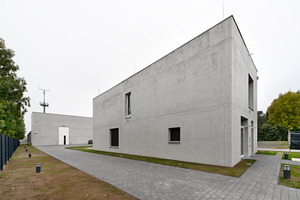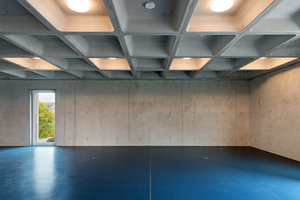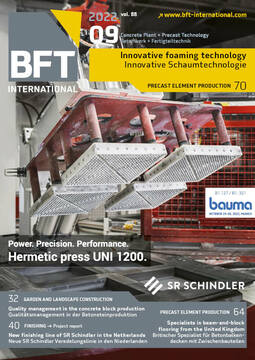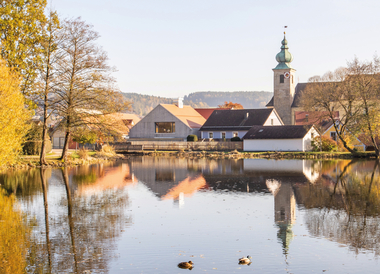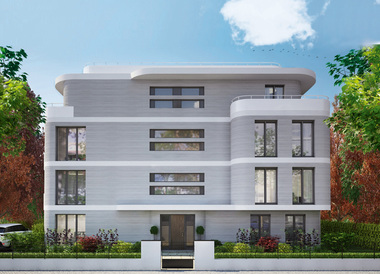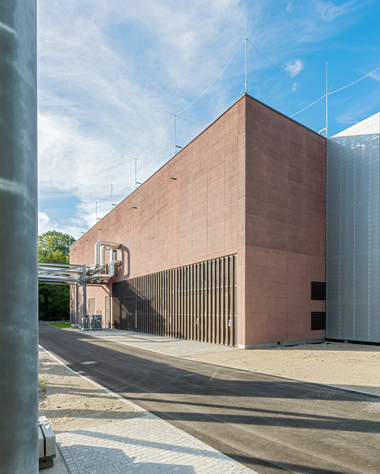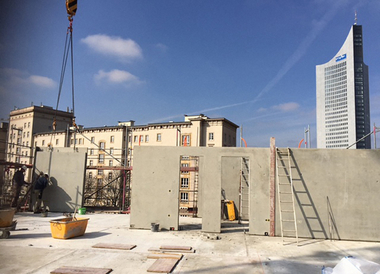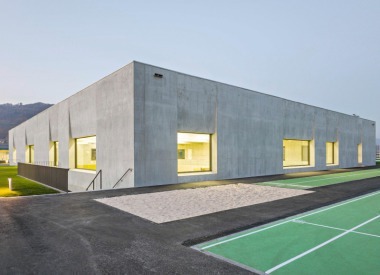Room for the arts thanks to lightweight concrete
Severe, abstract and limitless in scale – the new sculpture hall and the reception building for the Pohl Collection in Marburg, Germany, presents itself. The monolithic walls made of Liapor lightweight concrete provide not only a suitable optical framework for the contemporary works of art, but also – thanks to the breathable, balanced indoor climate – provide optimal conditions for conservation of the exhibits.
In the course of time, the entrepreneurial couple Dr. Ana and Reinfried Pohl increasingly felt the need to share their comprehensive collection with the public and, in 2018, reached the decision to build a new building for the collection in Marburg-Cappeln, Germany. A former industrial site, with two large storage halls built in the 1990s, provided suitable space. These were converted into storage facilities for the exhibited art, and a new sculpture hall was built on their front side.
“The entrance building and the sculpture hall definitely emanate a certain severity. They have an abstract air and of being limitless in scale. The smaller reception hall gives a first indication of the following larger sculpture hall, which does not at first glance reveal its actual purpose,” explains the responsible architect Dr.-Ing. Johannes Sollich, of Sollich Architekten in Berlin.
Breathable and moisture-regulating
Both the reception hall and the sculpture hall were erected monolithically of Liapor lightweight concrete, with concrete grade LC16/18D1.2. The reasons: “We wanted to build as precisely as possible and with reduction of detail, which inevitably requires the use of monolithic lightweight concrete. It is a very attractive construction material that radiates special authenticity and honesty,” as Dr. Sollich explains.
Another important criterion for the decision to use lightweight concrete was the indoor climate: “The thermally insulating and heat-storing properties of Liapor lightweight concrete ensure a balanced climate inside the building, without abrupt temperature fluctuations. In addition, the walls are breathable and regulate moisture. The entire building breathes – and that is noticeable,” emphasizes Dr. Sollich. “Another positive side effect is the very agreeable acoustics on the inside, originating from the porous, non-reverberant walls.“ Responsible for these positive effects are the expanded clay spheres contained in Liapor lightweight concrete, with their internal diffusion-open pore structure.
In lively harmony
The external walls of the entrance building and of the sculpture hall, 50-cm thick, were erected between 2018 and 2019. The Liapor lightweight concrete was manufactured and delivered by Heidelberger Beton GmbH Region Süd-West, and was implemented by Faber & Schnepp GmbH & Co. KG of Giessen, Germany. Individual expanded clay spheres, the shrink holes and the individually cast layers are apparent in detail, especially at the non-hydrophobic internal walls. “The fair-faced surfaces are very much in evidence and enter into dialog with the art exhibited there. They suit the building and its purpose very well,” says the architect.
Special durability
“We are most satisfied with the result and with the Liapor construction material,” summarizes Sollich. “Building with lightweight aggregate concrete requires, of course, considerable planning and precise timing. After all, compared to multilayer composite construction materials, nothing can subsequently be concealed here, the building shell being erected in a single step of work.” In addition, both buildings, due to their durability, get high marks for sustainability. “We assume that each building has a service life of at least 100 years.” More than enough time, therefore, to look at the collection of art: for example, by participating in an official tour of the current exhibition of the Pohl Collection.
CONTACT
Liapor GmbH & Co. KG
Industriestr. 2
91352 Hallerndorf-Pautzfeld/Germany
+49 9545 448-0

